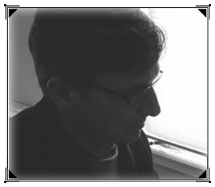Since the Pinot in barrel is only fermenting sugar at a rate less than 1 g/L/week I decided to help things along.
First, I topped the wine with 1.75 liters of water. This should take the alcohol from 15.1% to 14.2%.
Then I weighed out 63 g of RC212, the yeast I used to ferment the must in the first place. This rate of yeast addition is about 150 g/hL or six times the normal recommended rate. In my experience the rate of addition for re-inoculation needs to be at least 100 g/hL. A rate of 200 g/hl is overkill for all but the most stubborn stuck ferments. I dissolved the RC212 in 630 mL of distilled water at 104° F and waited 20 minutes.
I might otherwise have used Uvaferm 43, the absolute "best" yeast for restarting a stuck ferment, but I didn't have 63 g of Uva43, and this wine is just "barely stuck".
After 20 minutes I stirred into the yeast mixture 2 g sucrose (table sugar) dissolved in a small volume of hot water. This is important. The sugar addition brought the yeast mixture to 3 g/L – about the same as the wine. The rehydrated yeast started to bubble moderately.
While the yeast was rehydrating I pulled about 920 mL wine from the 30 L barrel and 340 mL from the 11 L carboy (1260 mL total). I poured half this volume into a clean 1/2-gallon jug and set it in a warm water bath to raise the temperature of the wine.
When the wine had warmed to 80° F, and the yeast mixture cooled to 90° F, I poured most of the yeast prep into the jug and put a fermentation lock on top. The mixture started to bubble immediately.
I transferred the remaining 630 mL of wine to the leftover yeast prep, stirred, and poured into a clean 750 mL screw-top bottle. This mixture also started producing bubbles immediately.
So far so good.
I took both the jug and the bottle with me to the office, and left them in my car to keep them warm. In retrospect I should have exercised a little more caution with where I placed them in the car. When I returned 6 hours later both were in the sun and warmer than I wanted. I would have been happiest if they had stayed at 80° F but both were measuring 100° F when I got back to the winery. Both were still producing bubbles, so my hope is that the yeast weren't completely killed.
Nota bene: alcohol plus high temperature equals dead yeast.
Anyway, I pitched the yeast prep from the 1/2-gallon jug into both the barrel and the carboy to top, and both started to show some signs of bubbles rising to the surface. I will take a sample to the lab in a few days to see if this restart was successful.
Monday, April 7, 2008
Subscribe to:
Post Comments (Atom)

No comments:
Post a Comment